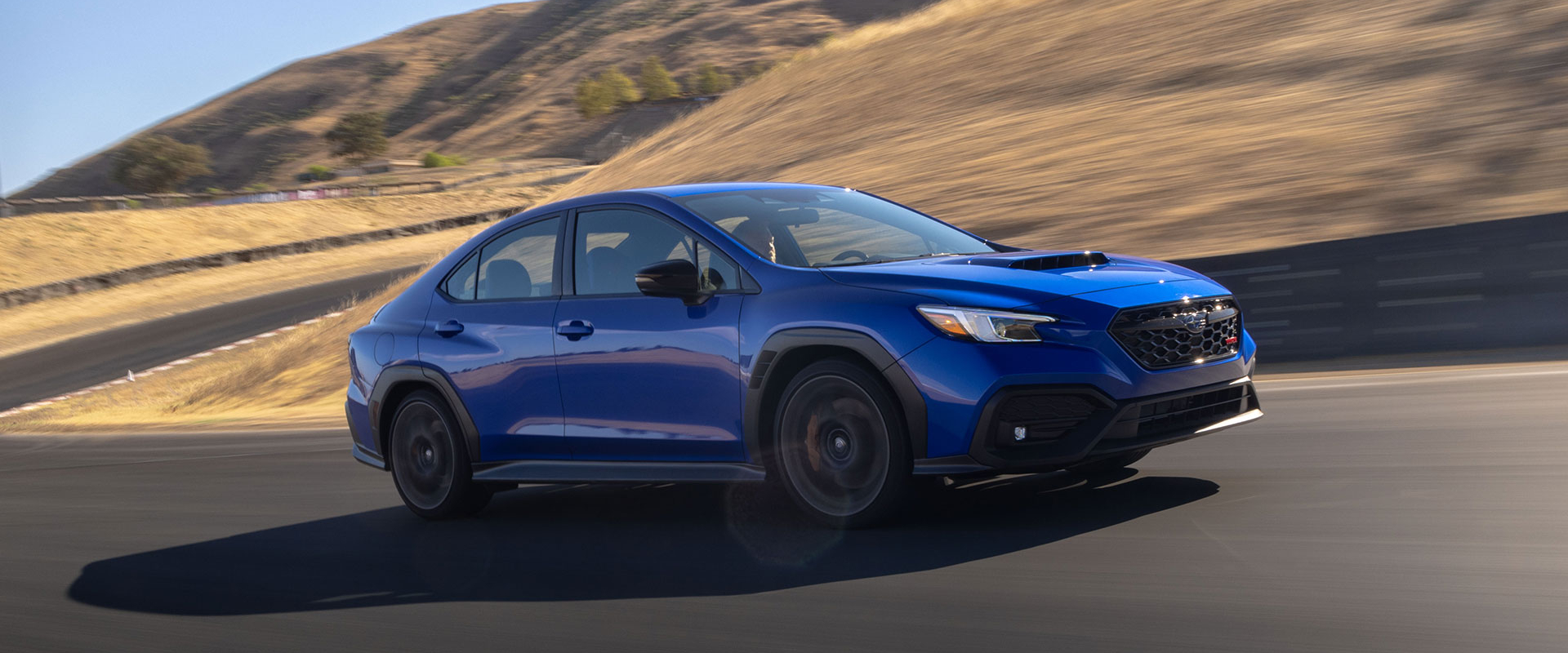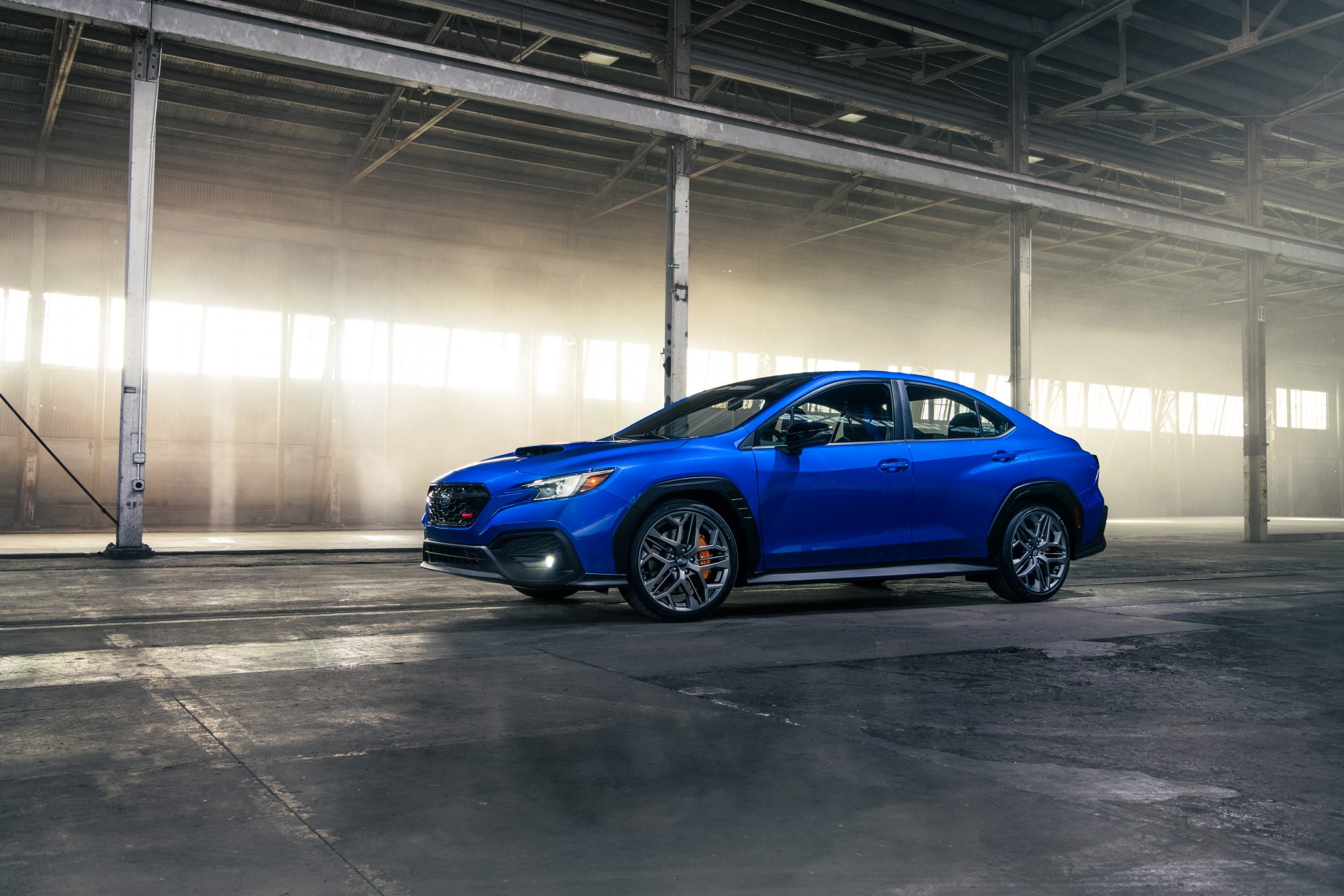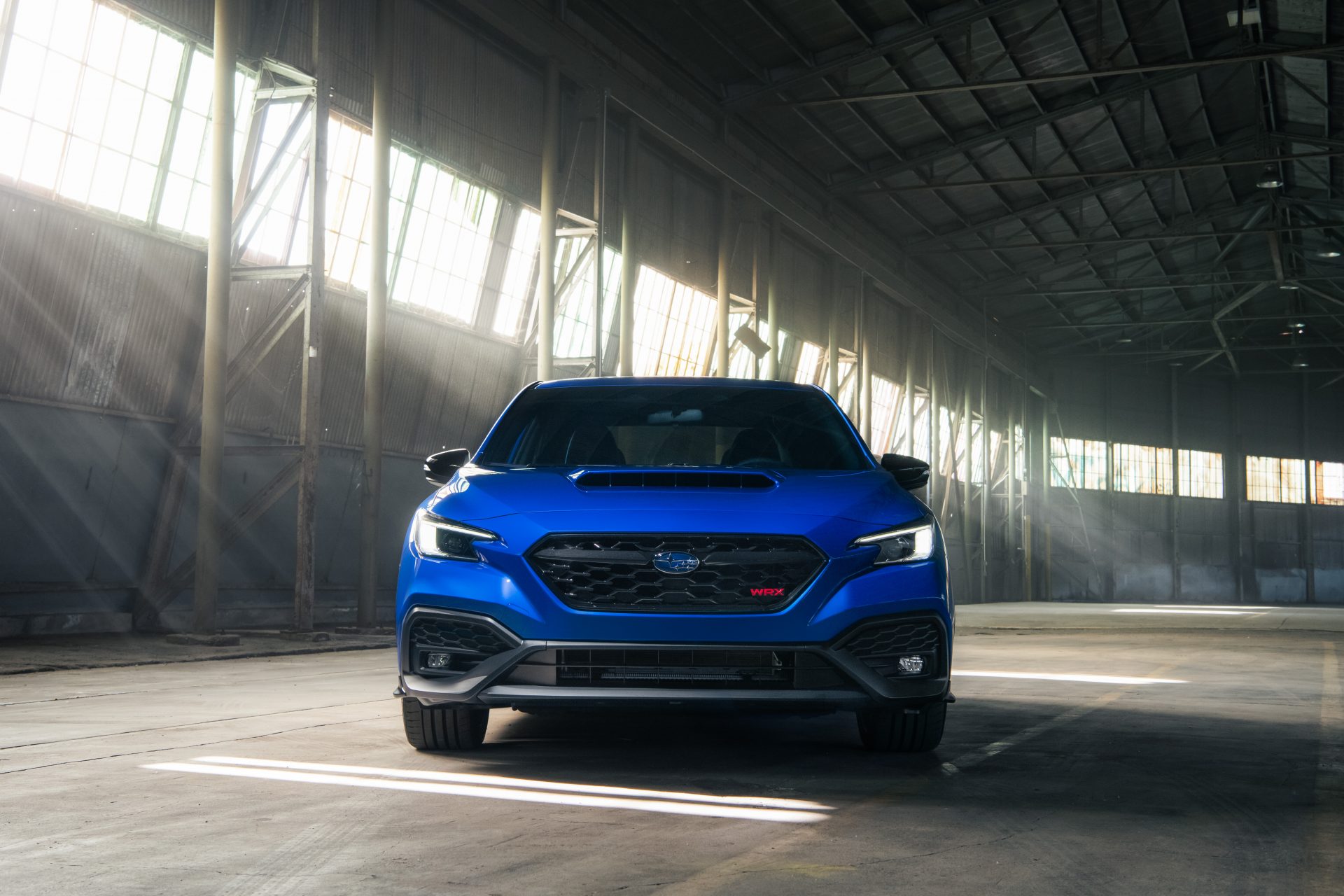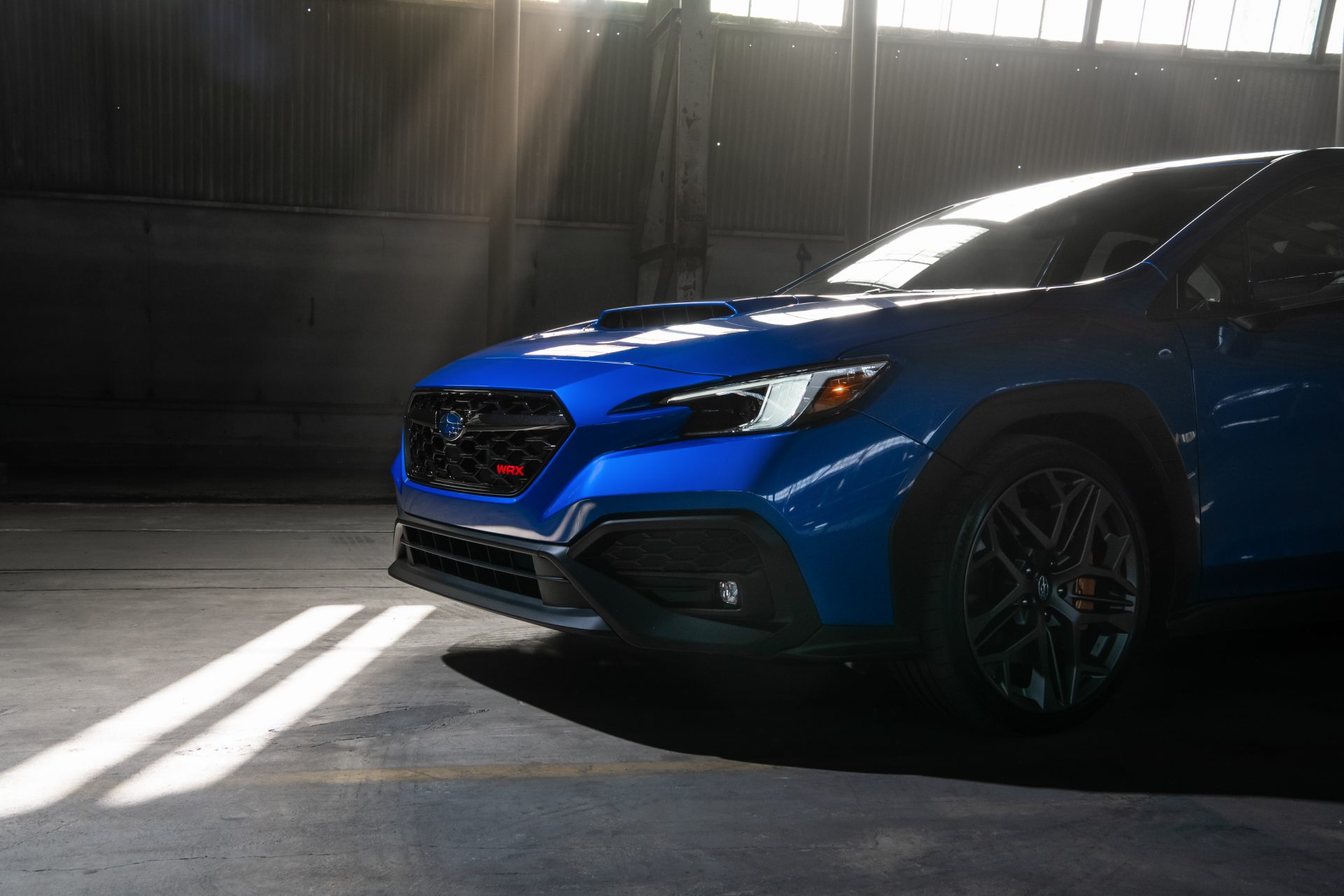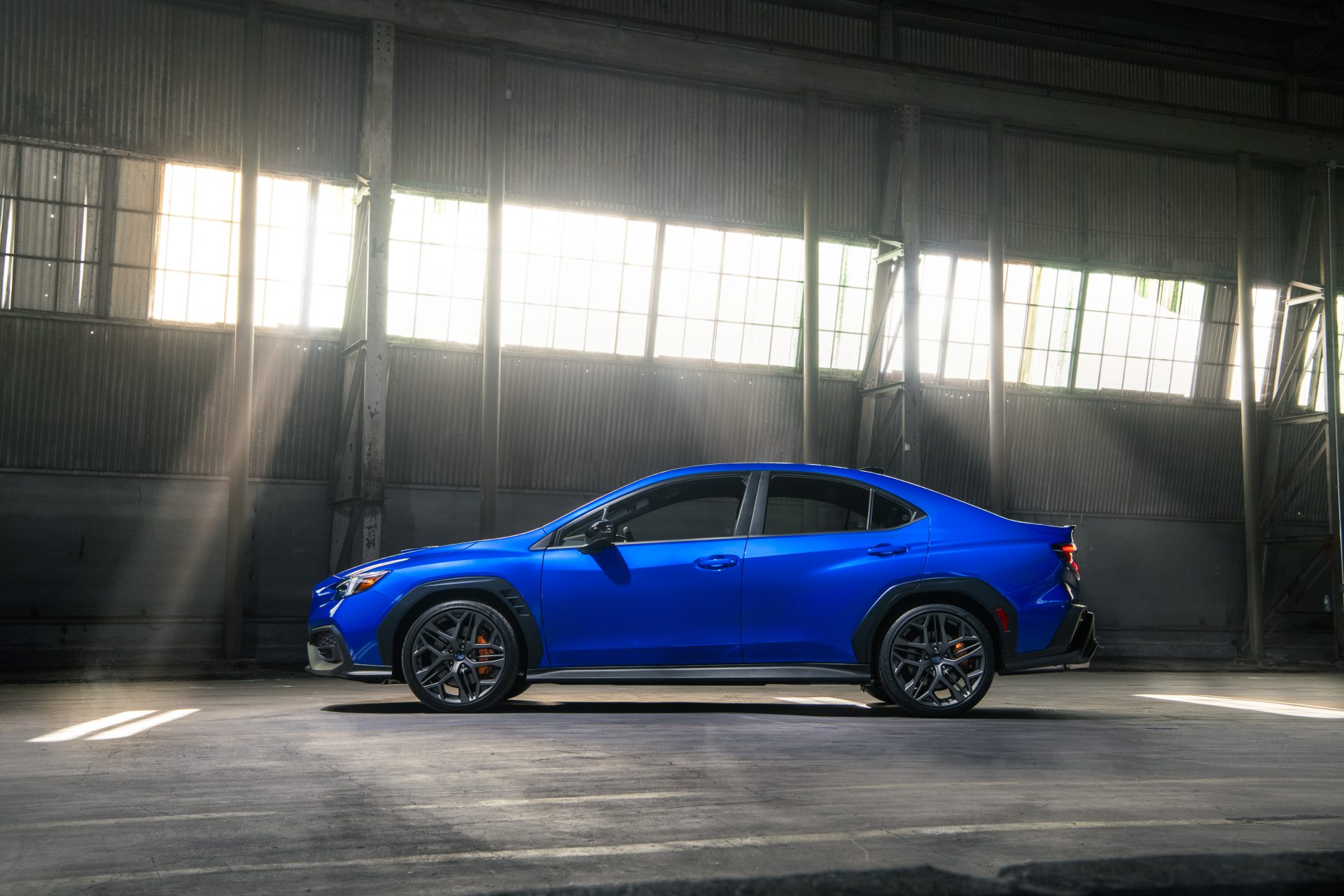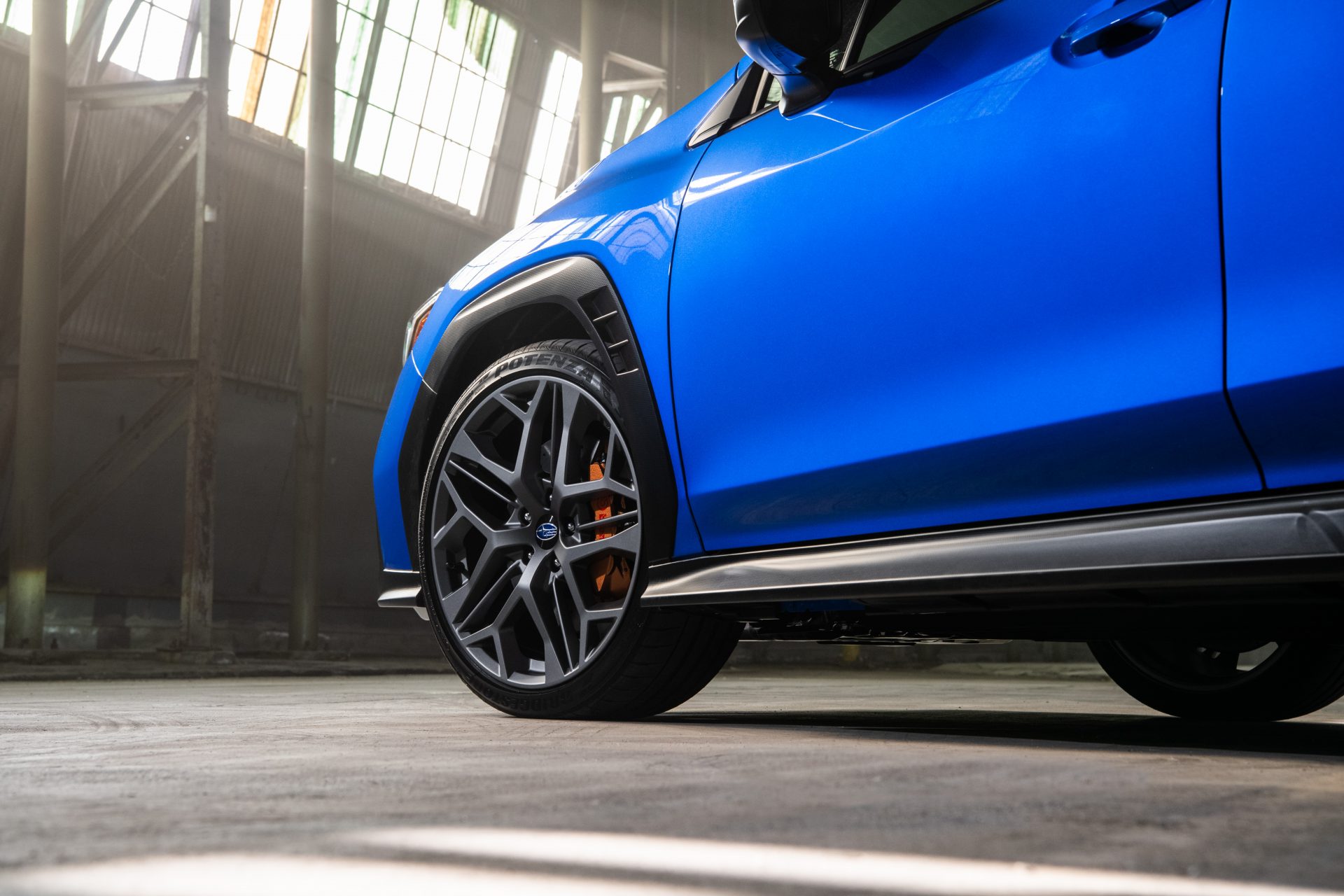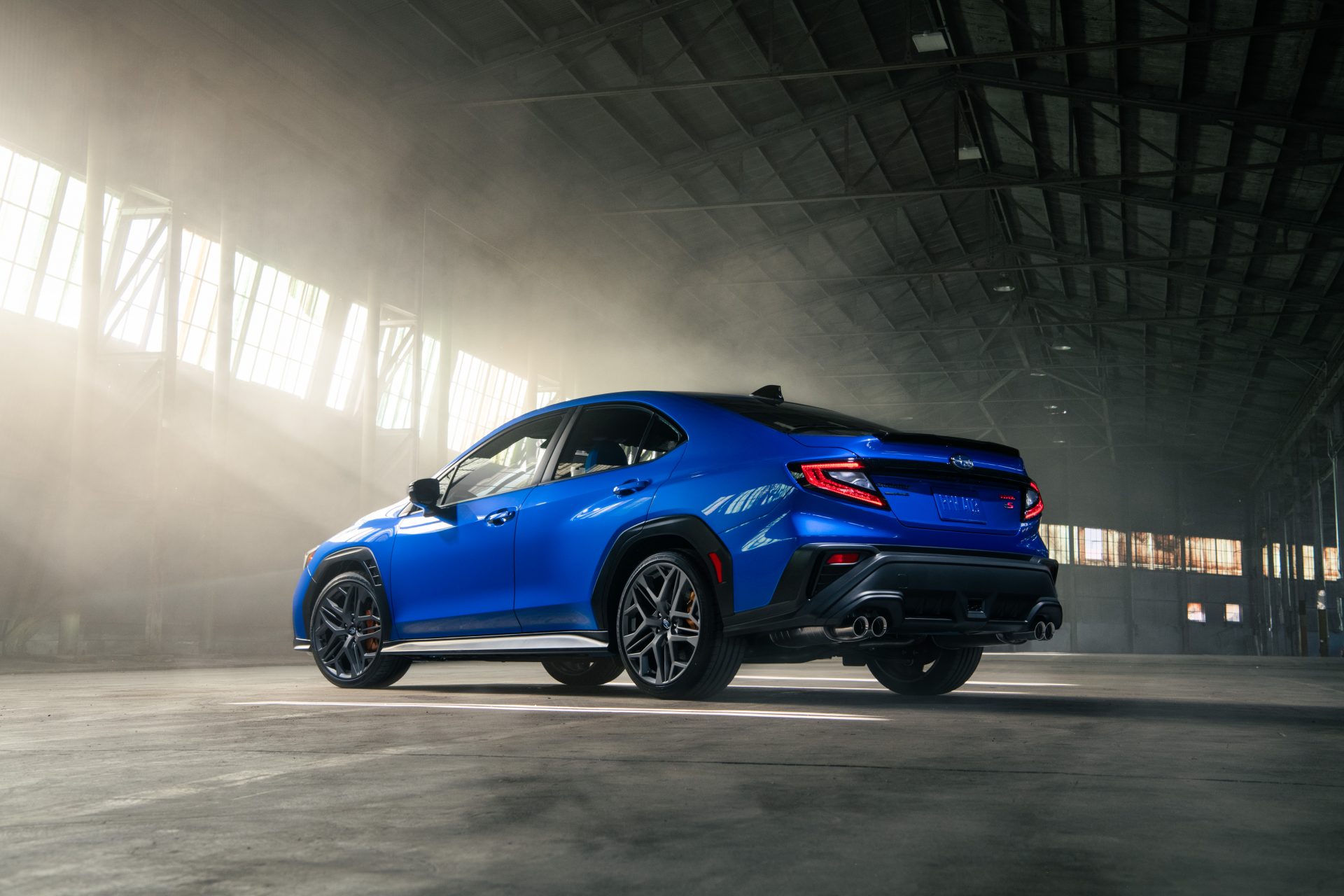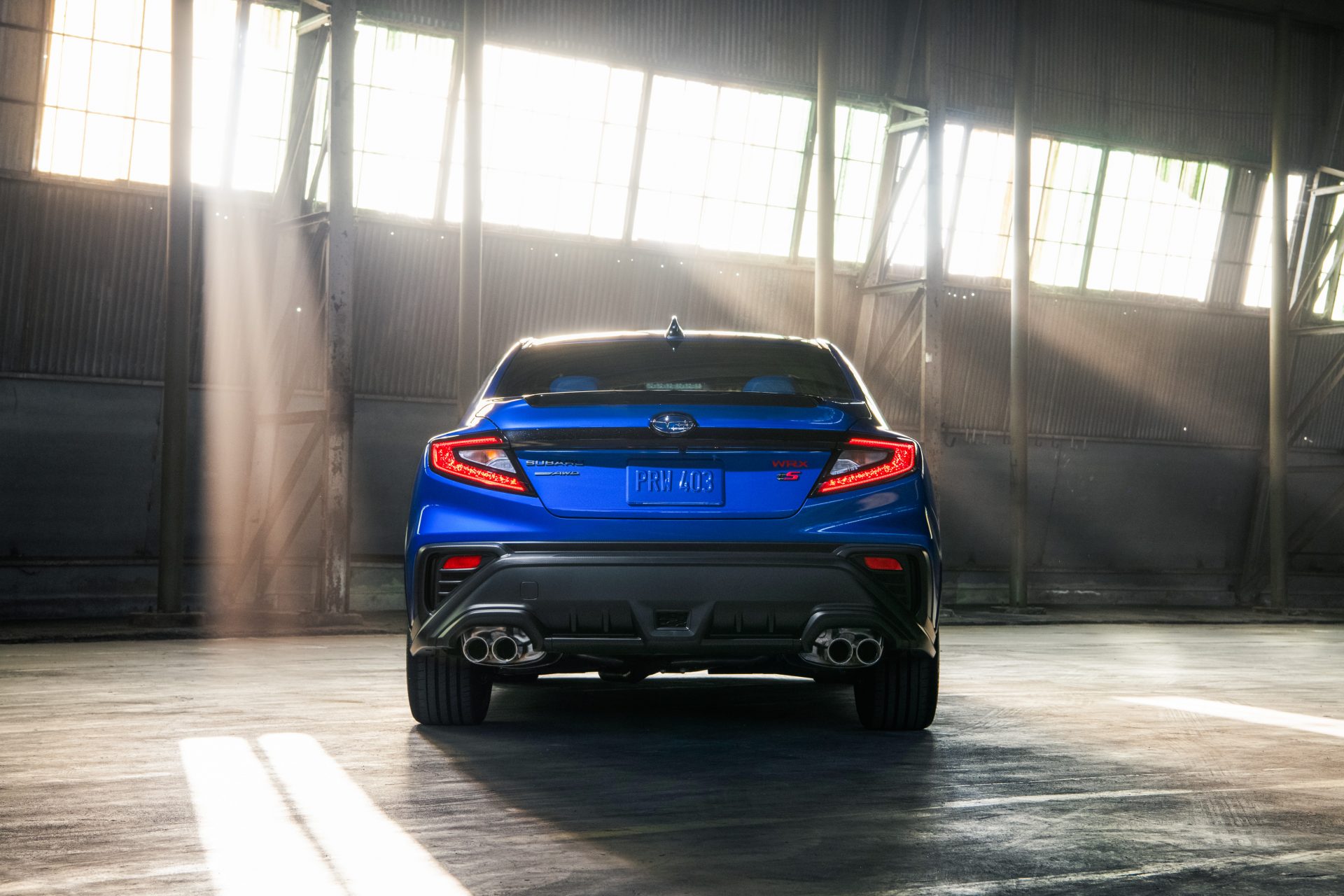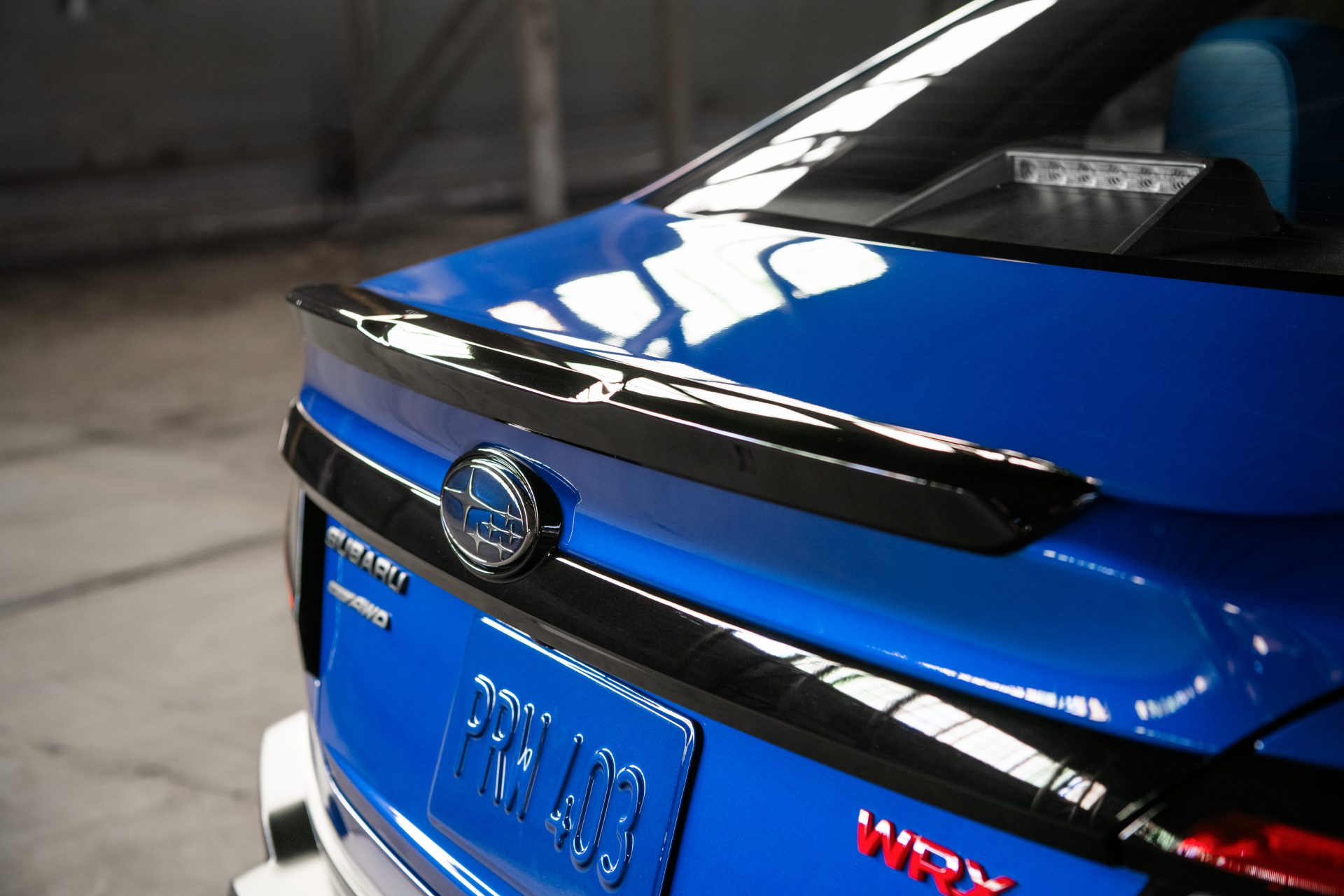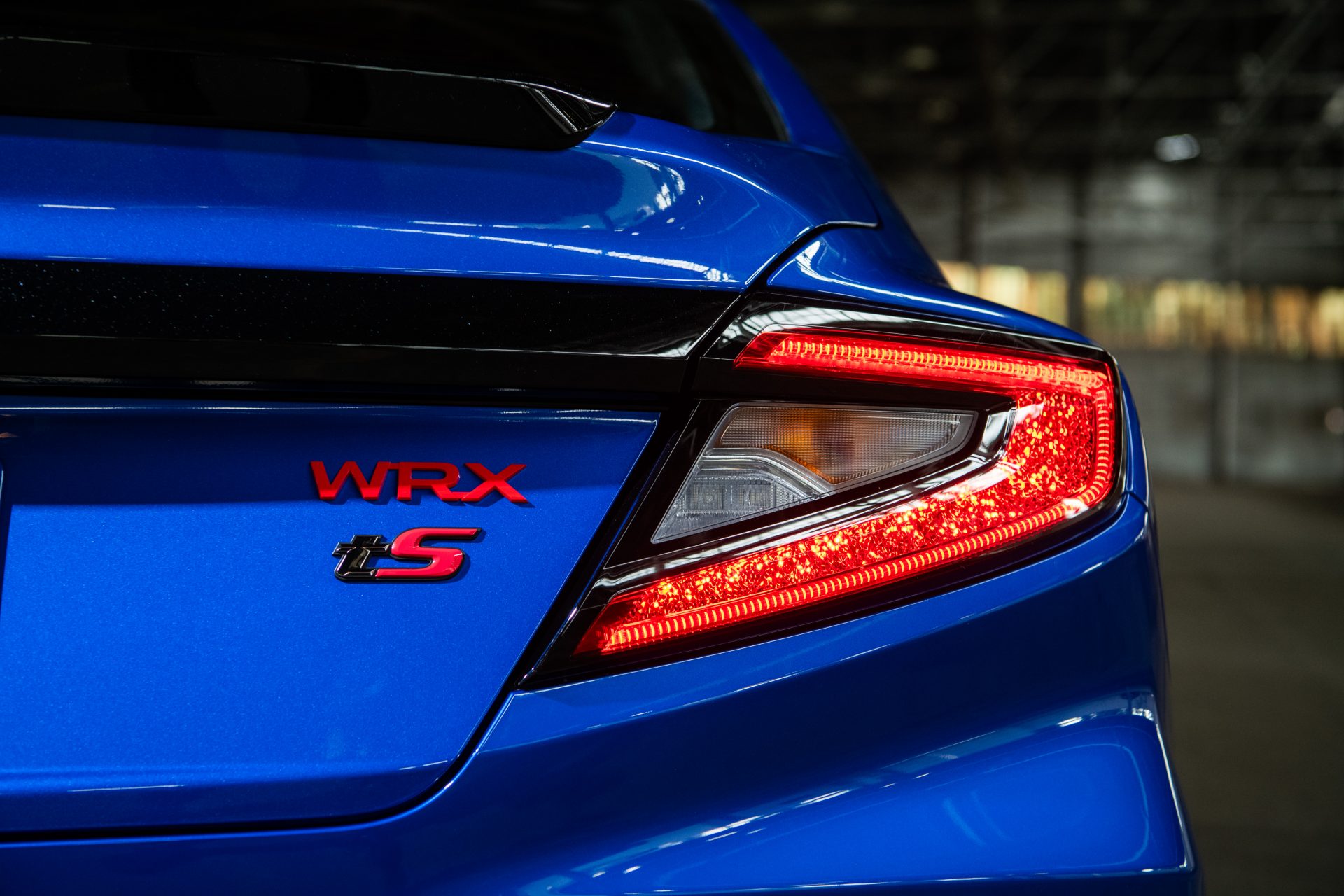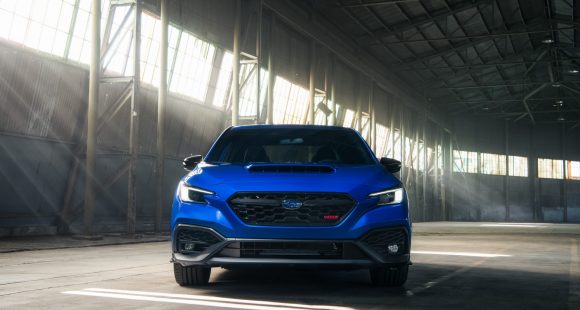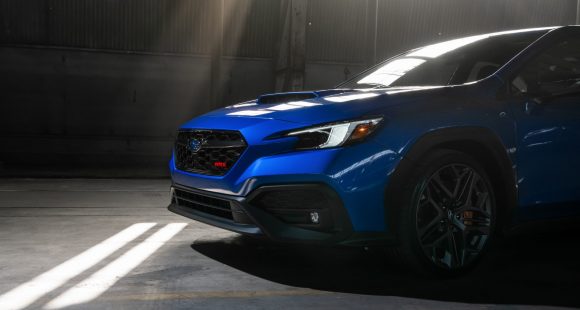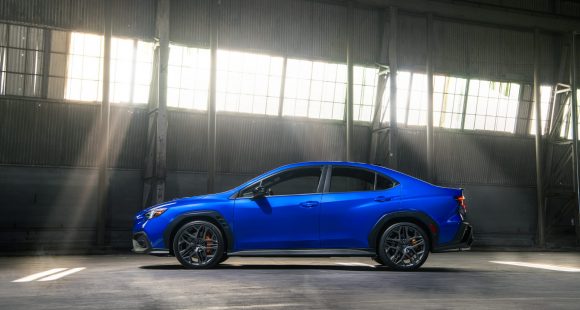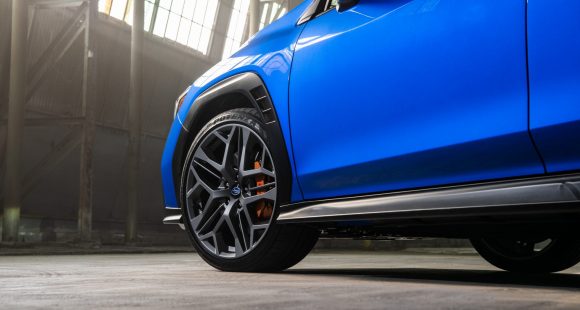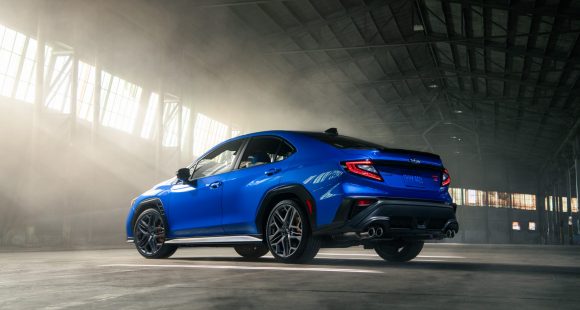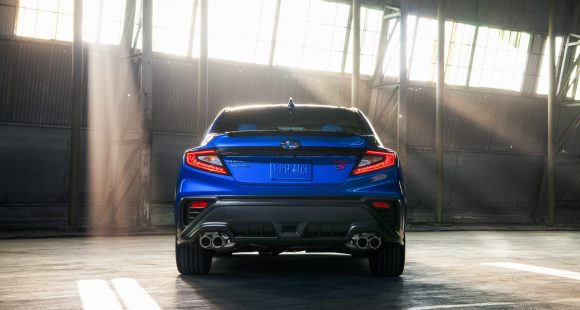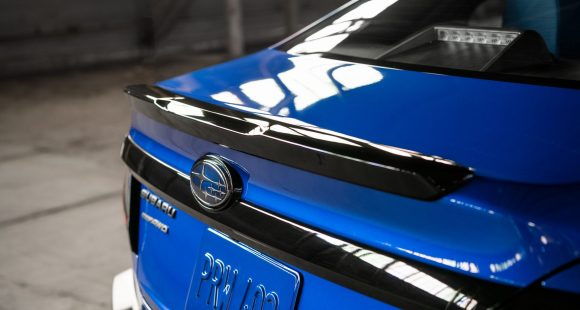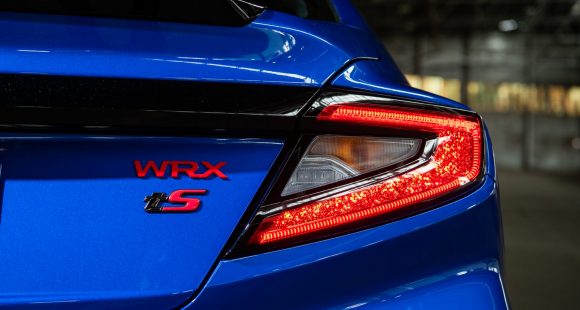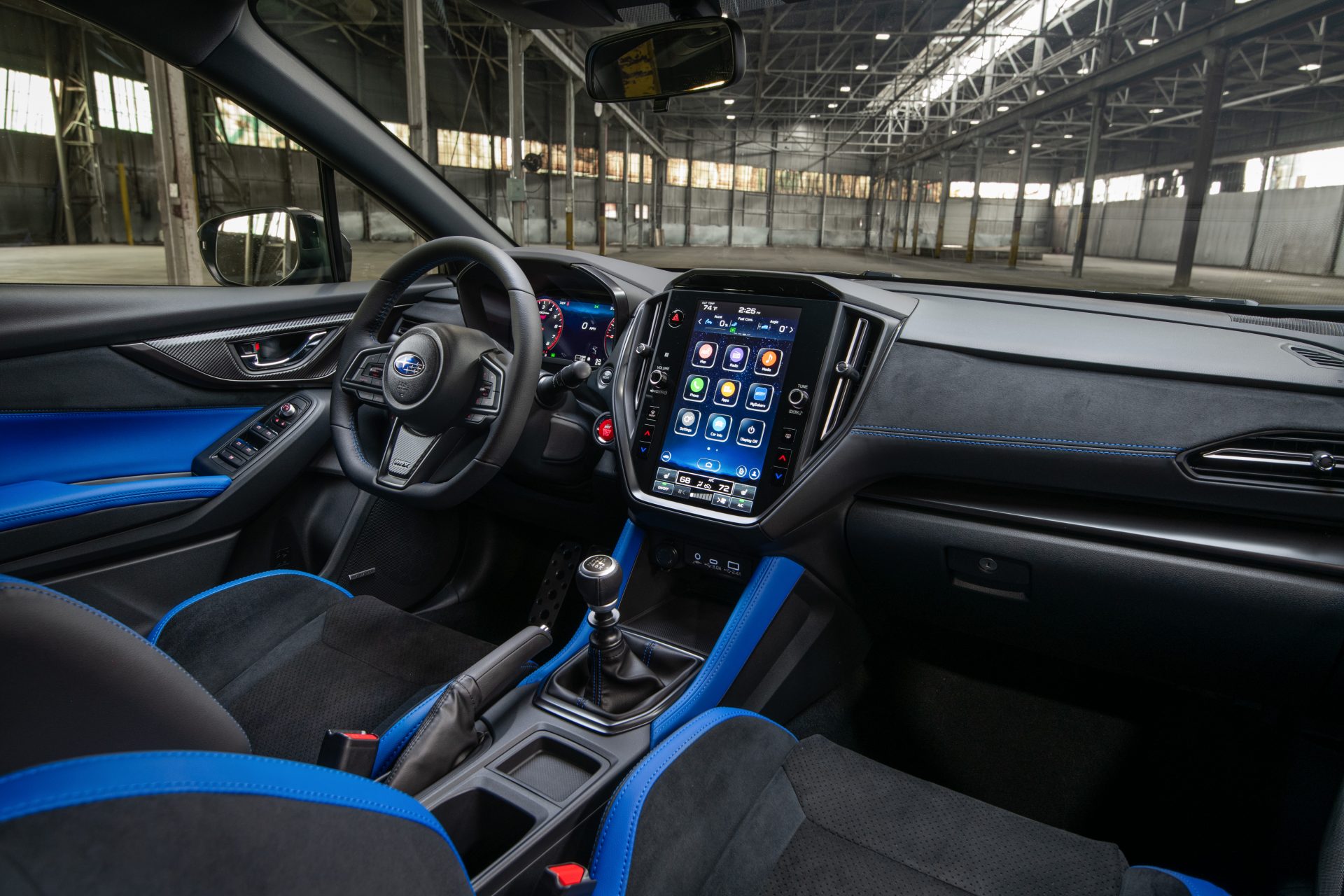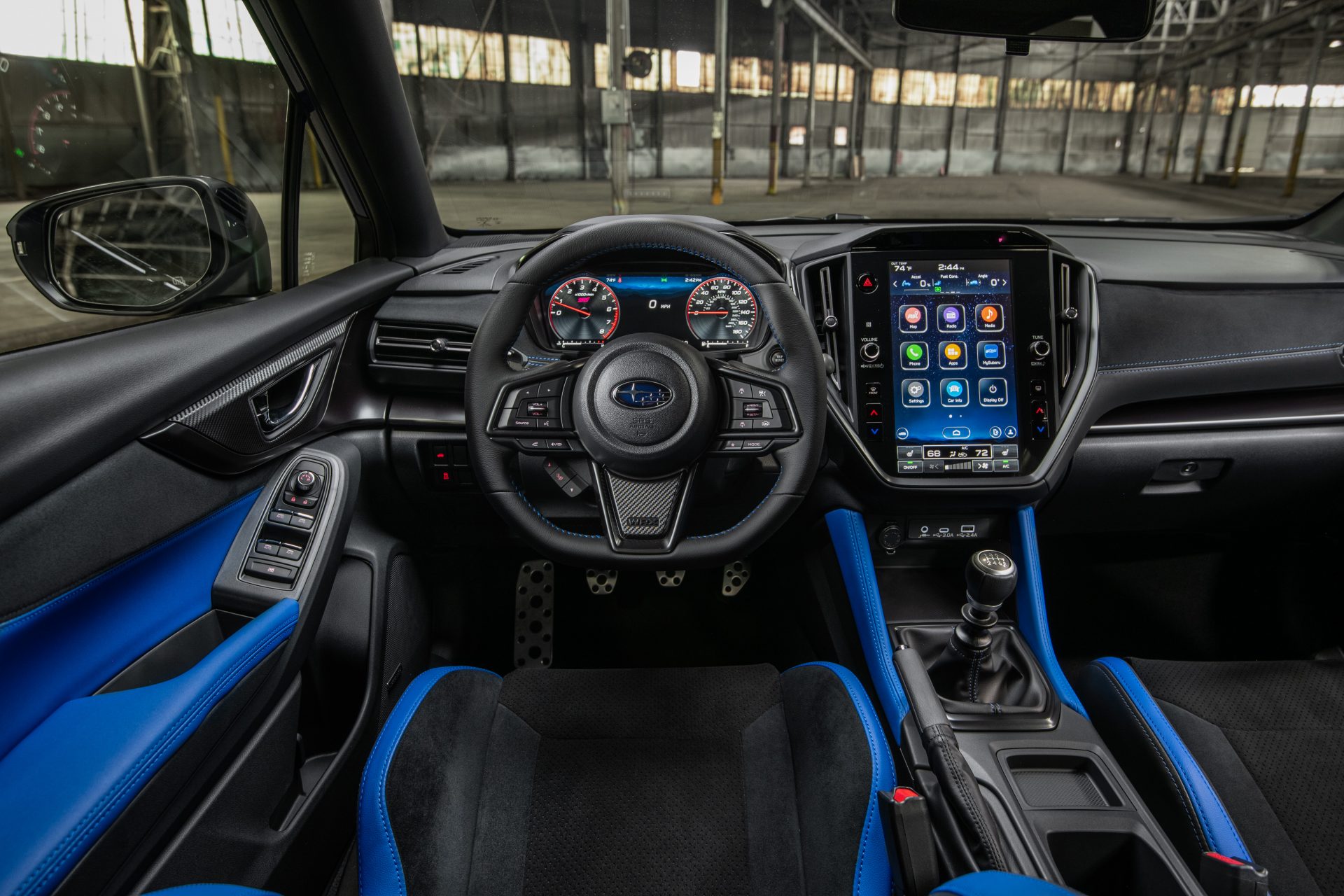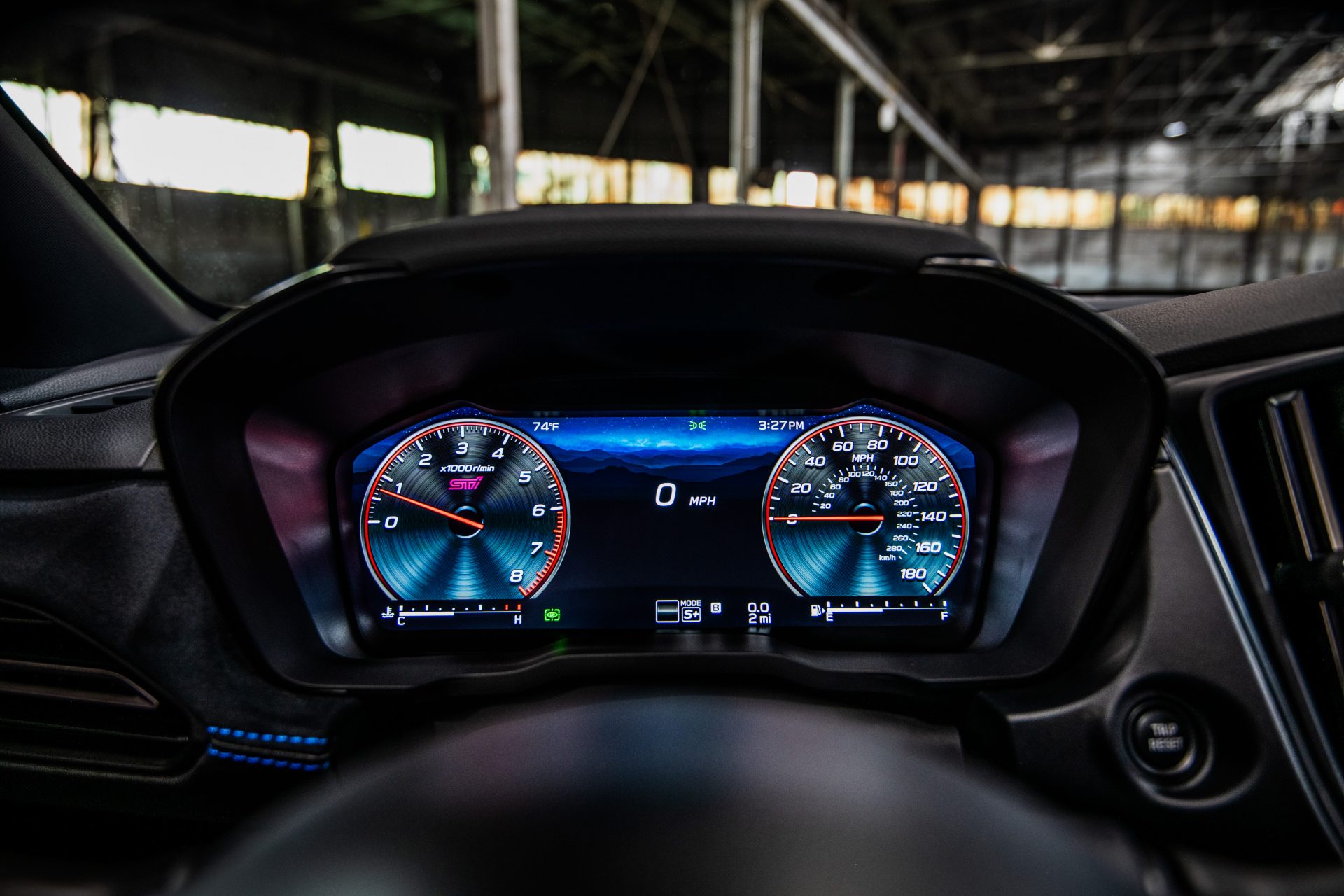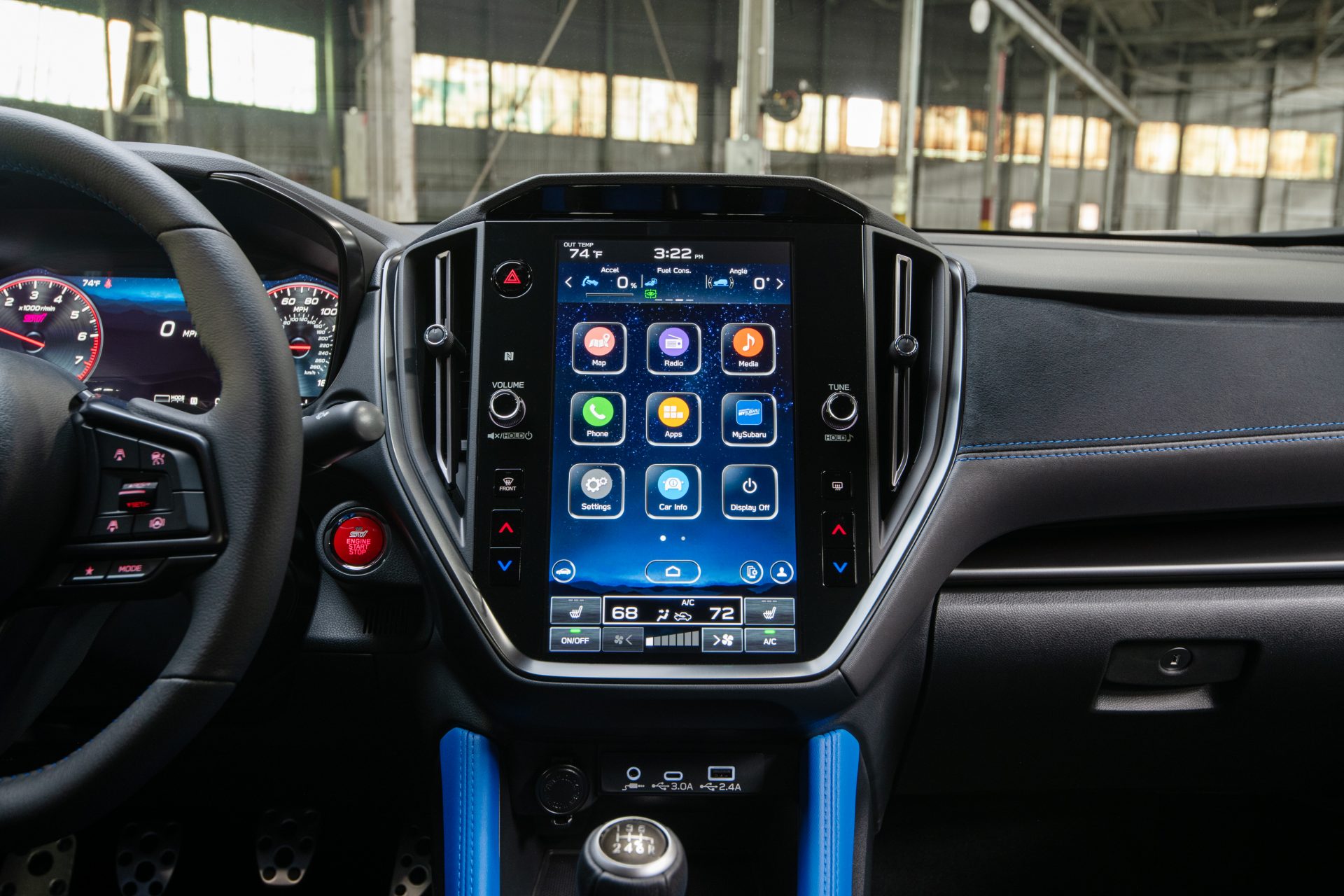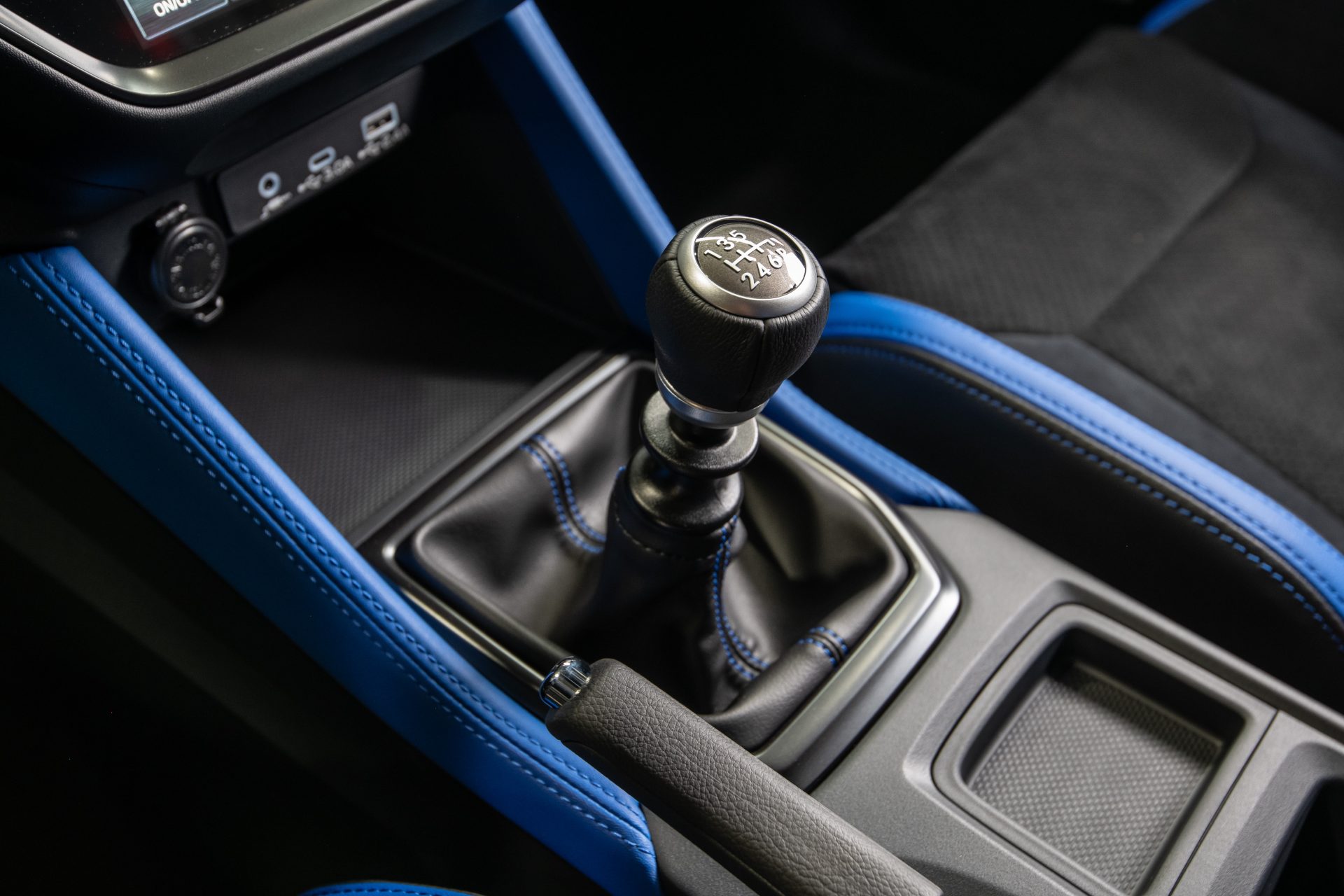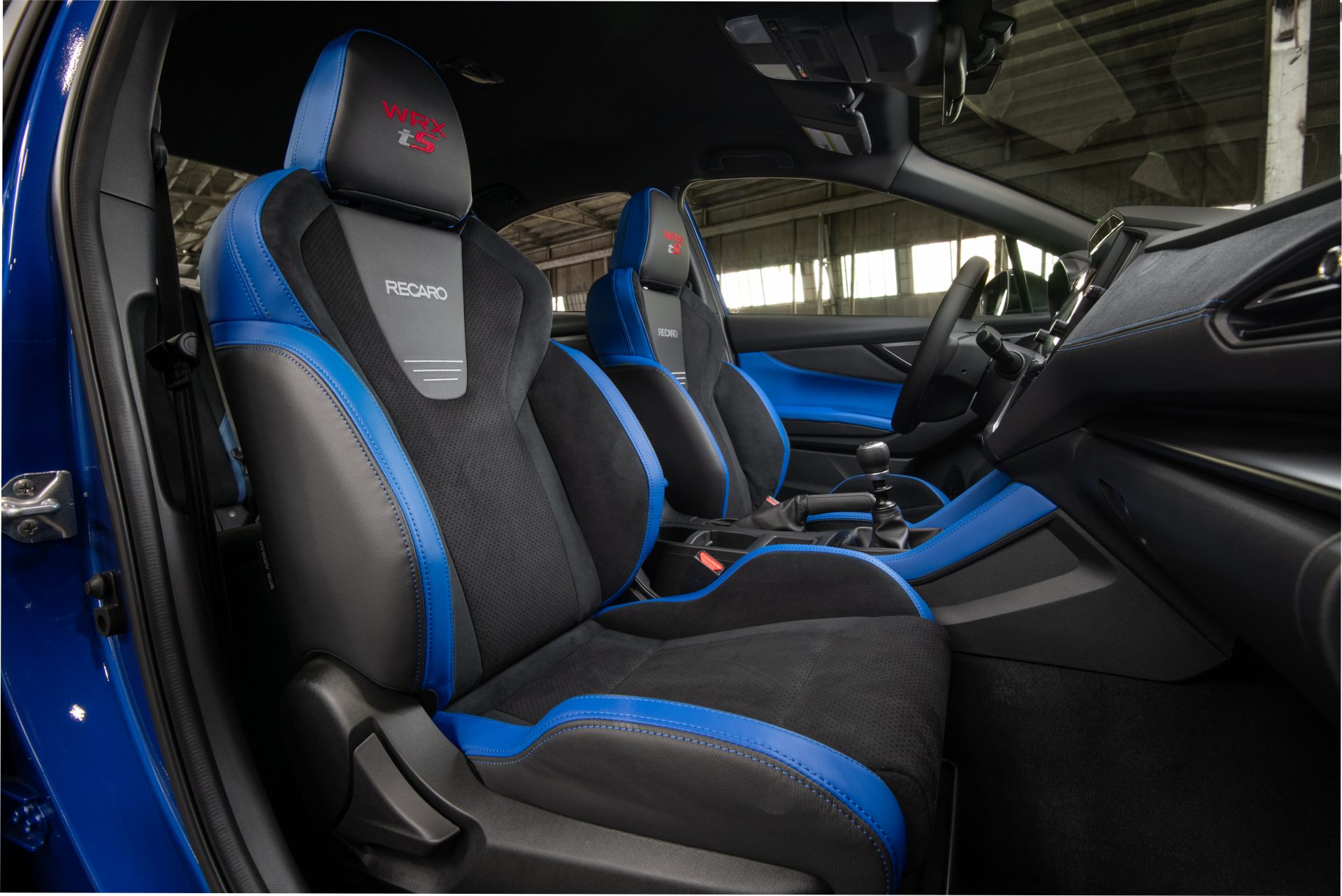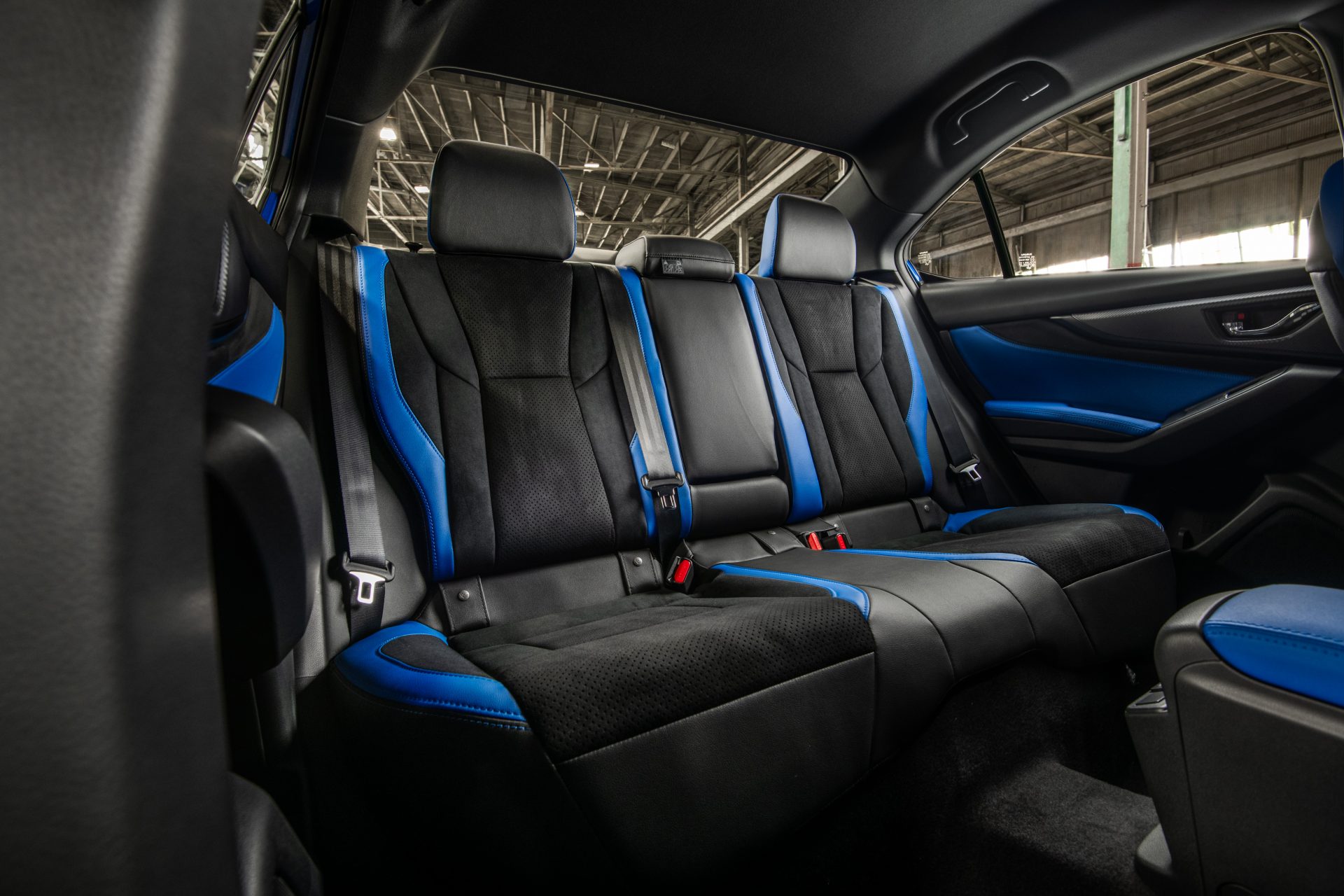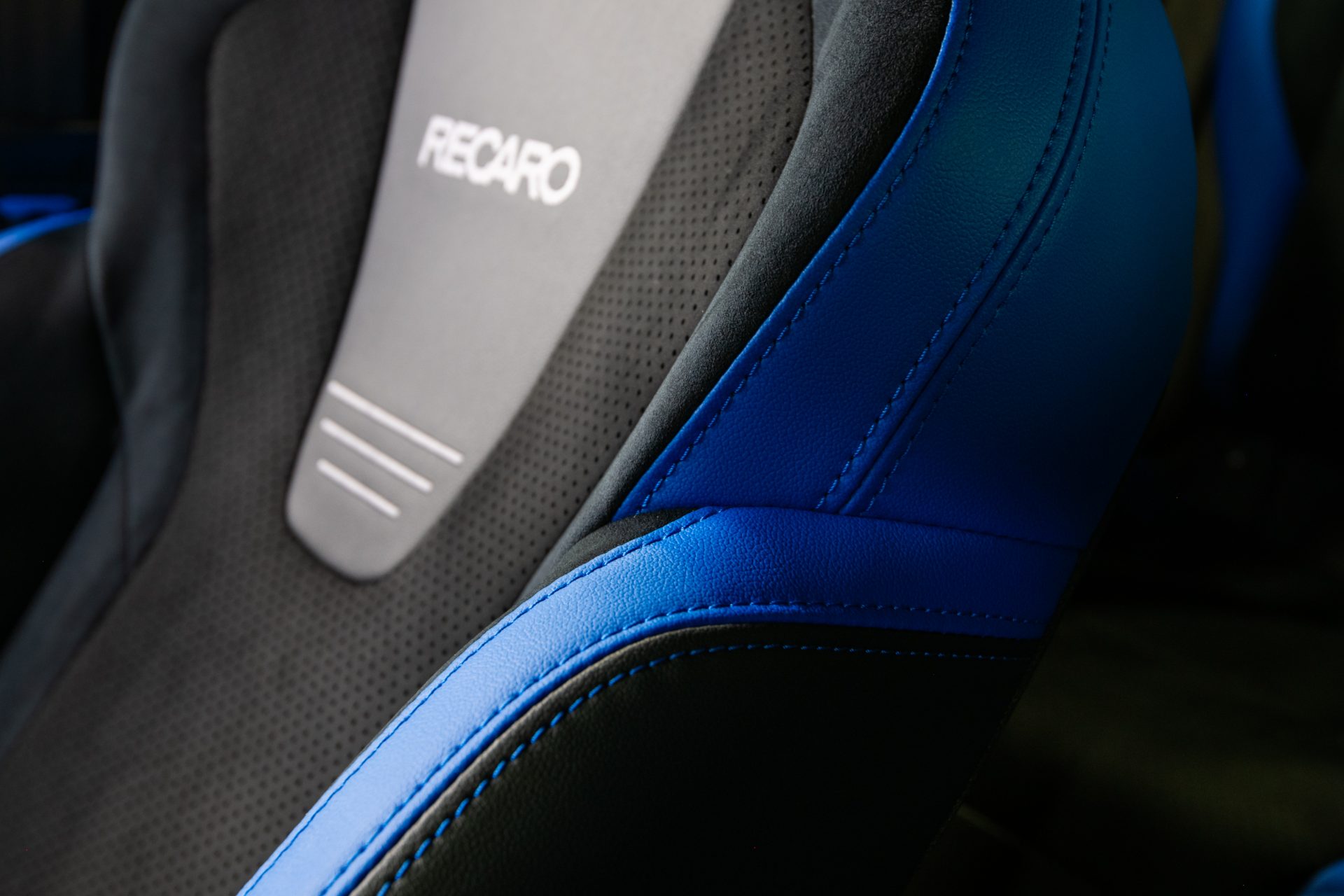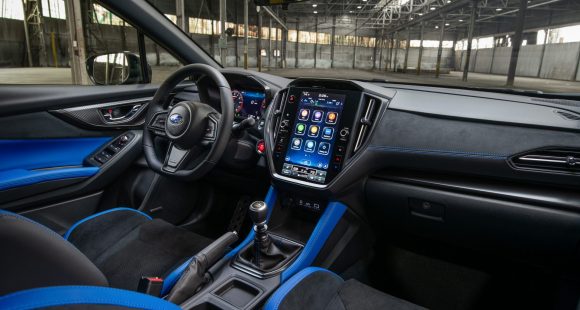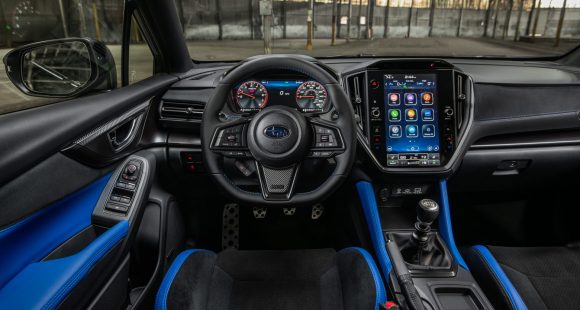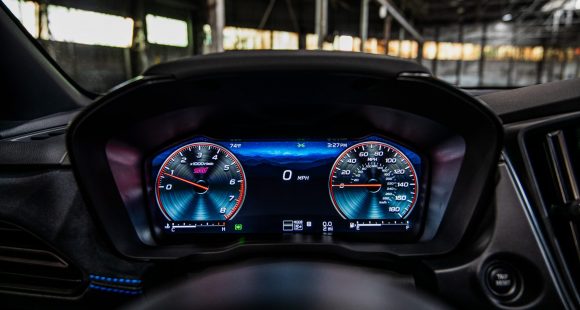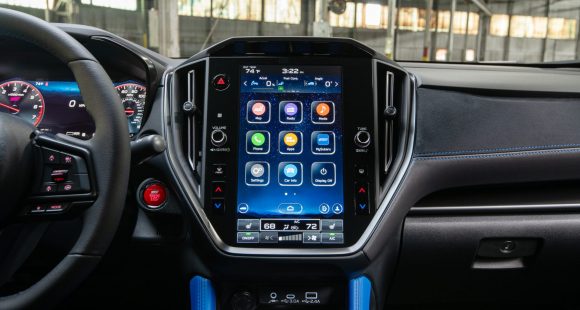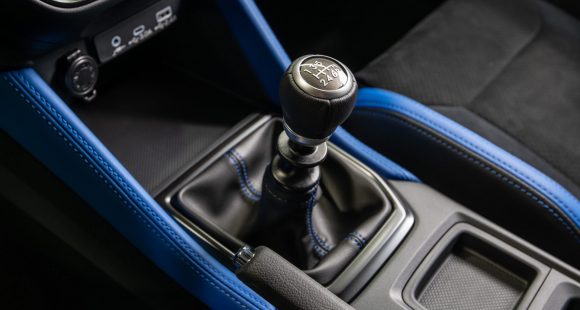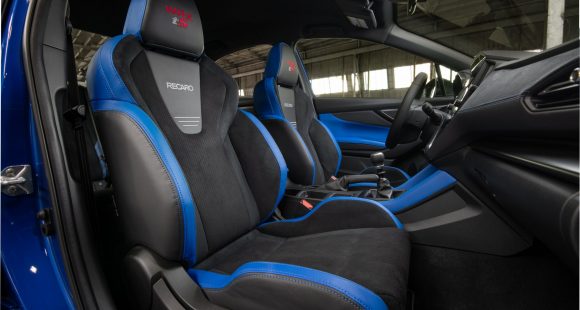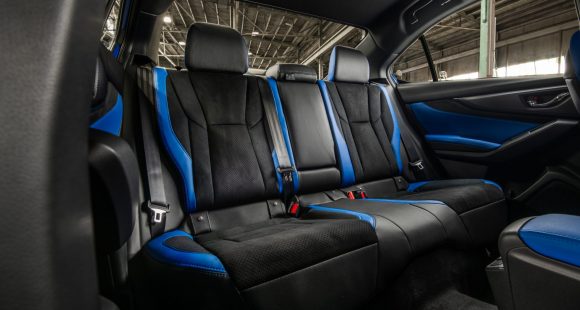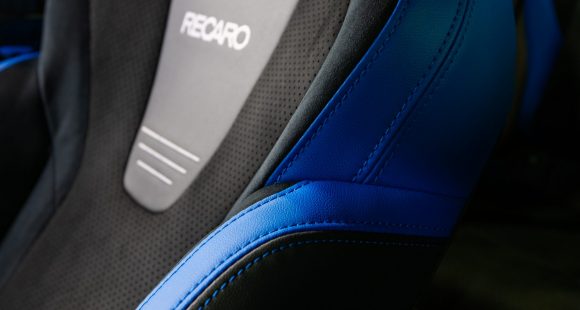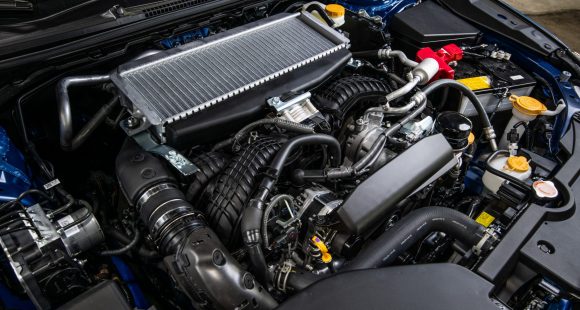2010 Mercedes-Benz E-Class
With the economy still in question, car sales continue to suffer, no matter what the brand, or how well-heeled the customer. So as Mercedes-Benz prepared the launch of their all-new E-class, they made the decision to hold nothing back. They wanted to make their mid-size sedan and coupe as appealing as the flagship S-Class, but for a lot less money. Now it’s time to see if they’ve succeeded.
The E-Class is the proverbial backbone of Mercedes-Benz, and the all-new 2010 edition arrives with an edgier look and more techno-goodies than we can count.
Joining the classic sedan is a new E-Class Coupe, replacing the CLK.
We tested both the sedan and coupe side by side. While our duo shared the same deep black finish, and crease styling theme, each body style has plenty of unique details.
Let’s dissect the sedan first. Both in Luxury and Sport forms, it is more aggressively-styled, borrowing elements from the ConceptFASCINATION show car.
Oval front lamps have given way to wedgy housings, with hockey-stick LED driving lamps below. Still, our Sport model’s tri-bar grille is most familiar, as is the standup three-pointed star.
Strong fender flares and brawny character lines lead back to a thick rear also decorated with LEDs, along with dual exhaust cutouts.
The 5-passenger interior is less dramatic, defined by lots of wood and fine grained upholstery, but now filled with S-Class like luxury and technology.
Our sedan’s multicontoured seats look flat, but use active bolsters to help maintain body position during cornering.
Much of the new technology is for safety’s sake. Standouts include Nightview Assist, Adaptive Highbeam Assist, and Lane Keep Assist. There’s even standard Attention Assist that monitors your inputs and will alert you if it thinks you’re falling asleep at the wheel.
And in addition to the normal front and side impact airbags, there are now two front pelvic airbags and one for the driver’s knees.
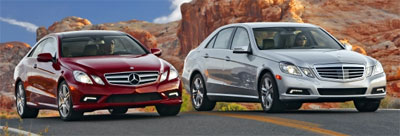 In the center of it all is Mercedes’ latest, and now standard COMAND interface, it governs the sound system, Bluetooth interface, and available navigation.
In the center of it all is Mercedes’ latest, and now standard COMAND interface, it governs the sound system, Bluetooth interface, and available navigation.
The sedan’s rear seat is both comfortable and spacious, and the low lip trunk provides a sizeable 19.1 cubic feet of space.
The E-Class coupe sheds both wheelbase and length, for an even more athletic shape.
You instantly think it’s capable thanks to a more open, twin-bar grille that surrounds an oversized star logo.
From there, lines flow pass its clamshell hood and along frameless doors and a pillarless greenhouse for a true two-door hardtop design.
Taillights and rear deck treatments are also sharper, for a nicely dynamic rear-view.
The Coupe’s interior is a more intimate, four-seat layout, but the standard panoramic sunroof keeps it from feeling confined.
Other differences include less wood and chrome, a dark surround to the five-gauge cluster, sportier bucket seats, plus steering wheel and console mounted shifters compared to the sedan’s column mounted flip switch.
The rear seat is expectedly tighter than that of the sedan, especially in legroom. The 15.9 cubic foot trunk is also smaller, but still accommodating.
Power for the E-Class is carryover. The E350 is equipped with a 3.5-liter V6 with 268-horsepower and 258 pound-feet of torque; with the E550’s 5.5-liter V8 doling out 382-horsepower and 391 pound-feet of torque.
Both tied to a 7-speed automatic which feeds the rear wheels for now.
A 4MATIC all-wheel drive sedan will be available later in the model year, along with the road-scorching E63 AMG, and a super thrifty E350 BlueTech clean diesel.
At the track, the E350 sedan will trot from 0 to 60 in 7.0 seconds, with a quarter mile of 15.5 seconds at 92 miles per hour. The 3.5 seven-speed combo isn’t a powerhouse, but it’s a decent performer with quick shifts.
The multi-link suspension with standard Agility Control yields a very nimble response without a harsh ride. Throughout our test the sedan remained firmly planted with plenty of grip.
Brakes were impressively solid too, with virtually no dive and minimal fade. Our 124 foot average from 60 to 0 rates great.
The E550 Coupe conquered our 0 to 60 run in just 5.6 seconds, with a fast quarter mile of 14.1 seconds at 105 miles per hour. Power never stopped building, with the deep and throaty exhaust note just egging us on.
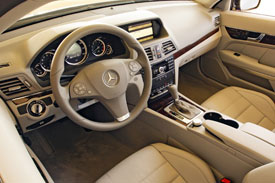 Through the cones, our E550 Coupe felt a good bit stiffer than the E350 Sedan thanks to the standard Dynamic Handling Suspension’s adjustable shocks and modified throttle response. It was actually a little twitchy, especially at lower speeds. But the faster we went, the more precise it became.
Through the cones, our E550 Coupe felt a good bit stiffer than the E350 Sedan thanks to the standard Dynamic Handling Suspension’s adjustable shocks and modified throttle response. It was actually a little twitchy, especially at lower speeds. But the faster we went, the more precise it became.
Our only disappointment were the brakes. Stops were solid, but at 135 feet from 60 to 0, a tad long with noticeable fade.
Mercedes-Benz has honed E-Class aerodynamics to make them sip fuel like smaller rivals. Our slippery E350 Sedan has Government Fuel Economy Ratings of 17 city/24 highway on Premium gas, with a 23.6 miles per gallon test loop.
Ditto the E550 Coupe with 15 city/23 highway, and 21.5 miles per gallon on mixed roads.
Pricewise, the E-Class is also a better value than last year. The Sedan starts are $49,475. That’s a drop of about $4,800. The Coupe begins at $48,925, or about the same as the less well equipped CLK.
So competitors beware. The new 2010 E-Class is even more formidable than before. With artistic styling, top drawer luxury and technology, and the addition of a new coupe, the “E-Class” remains the spear carrier of the Mercedes-Benz lineup.
Specifications
- E350:
- Engine: 5.5-Liter V8
- Horsepower: 382
- Torque: 391 Lb Feet
- 0-60 MPH: 5.6 Seconds
- 1/4 Mile: 14.1 Seconds @ 105 MPH
- 60-0 MPH: 135 Feet
- EPA: 15 MPG City/ 23 MPG Highway
- Mixed Loop: 21.5 MPG
- E550:
2025 Subaru WRX tS
Subaru’s “World Rally eXperimental” Gets Tecnica-Tuned Tech
Building on its global rally heritage, WRX has been a standalone Subaru nameplate, marketed separately from garden variety Impreza, for two generations now. And while the current WRX still lacks the full STI treatment, this WRX tS serves up some of that high-performance spice we’ve been longing for.
Before we go flat out into our Track Test of this 2025 Subaru WRX tS, lets open the Subaru dictionary so we’re all on the same page. “tS” stands for “tuned by STI;” and “STI” is an acronym for “Subaru Tecnica International,” the brand’s high-performance sub-group best known for upgrading the WRX— oh, that stands for “World Rally eXperimental,” in case you didn’t know.
All that said, STI has been largely dormant for this WRX generation, but this tS sprinkles more of their engineering magic into the mix. No, that doesn’t mean extra power, but does mean significant chassis-related improvements.
First, electronically controlled dampers, adjustable through the 11.6-inch tablet-style infotainment screen. That meant a softer “comfort” mode on the 10+ hour commute to and from Savannah’s Roebling Road Raceway. But once we were there, it was the firmer “Sport+” setting all the way, heightening response from the WRX’s throttle and already quick dual-pinion power steering system. There’s still some body roll for rally-esque weight transfer, but it’s well sorted and provides the “toss-ability” you want in a WRX.
Though if you do autocross your tS, which we implore you to do, you might feel the six-piston front, two-piston rear Brembo brakes first. The bite is strong, giving good rotation in the corners and plenty of “halt” for this 3,400 lb. compact with minimal fade, keeping us on track all week…until some unfortunate winter weather passed overhead. No worries here, as Subaru’s Symmetrical All-Wheel-Drive system got us to the track for some powdered deserts: Frosted donuts served up Michelin style, a set of winter tires different from the grippy Bridgestone Potenza S007 rubber the tS typically rides on. Some prior hot laps of California’s Sonoma Raceway gave credence to those Bridgestones, and showed us what this hot-compact can do in ideal conditions.
It’s well sorted and provides the “toss-ability” you want in a WRX.
Other tS enhancements are cabin-based, namely these beautiful blue Recaros. Most of our staff appreciated their moderately-aggressive bolstering on both street and track. And they’re even heated, too. Another tS-only appointment is this 12.3-inch digital gauge display. It mimics the standard analog gauges with some additional info, but can switch to a navigation mode for more convenient route guidance.
We do wish our tS came in the new Galaxy Purple or the trademark World Rally Blue, but this Crystal White paint wasn’t too shabby, contrasting its Cherry Blossom Red badging and blacked-out lip spoiler. Otherwise, the tS is like any other WRX, down to the hood scoop funneling air to the top-mounted intercooler.
Underneath is the same turbocharged 2.4-liter flat-four in all other trims, boxing at 271 horsepower and 258 lb-ft of torque. The freak winter weather stopped straight-line testing, but a 0-60 time estimate of 5.5 seconds is about as spry as you realistically need, pulling strong through most of the tach; though the 6,000 RPM redline required attentive shifting of the six-speed box, which the tS comes exclusively with. The throws are precise, if a little long, and the clutch is wonderfully weighted.
With discontinuation of the Base trim, pricing for the WRX now starts with Premium at $36,920. The tS is at the top of the lineup with the automatic-only GT, both starting at $46,875. All WRXs continue to be made in Gunma, Japan.
If you’re an enthusiast itching to do the tuning yourself, perhaps the 2025 Subaru WRX tS is not for you. But if you want a plug-and-play experience, this is it. While it won’t exactly bestow the loose-cannon, top-level driving skills exhibited by famous WRC drivers upon you, the tS moves this WRX’s game in a direction we’ve so desperately wanted Subaru to take.
Specifications
As Tested
- Engine: 2.4-liter flat-four
- Tranmission: 6-speed manual
- Horsepower: 271
- Torque: 258 lb-ft







